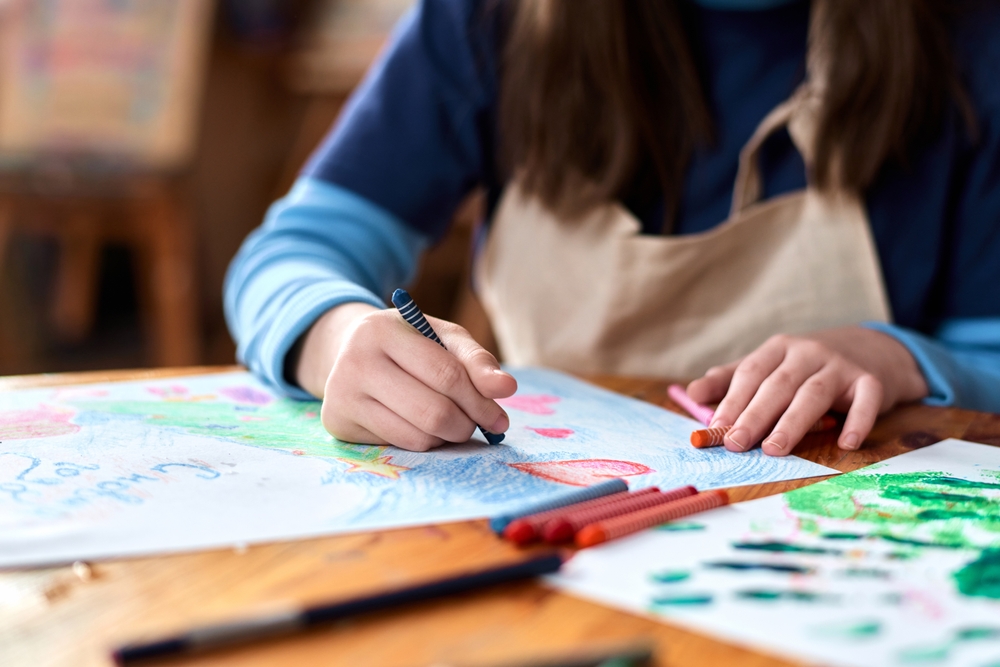When emotions pile up without a place to go, it can lead to a sense of emotional overload—where everything feels too much, too loud, or too fast. In those moments, it’s hard to find the words for what’s happening inside. That’s where art therapy can help.
Art therapy uses creativity as a bridge between what you feel and how you begin to process it. Whether you’re overwhelmed by stress, grief, anxiety, or trauma, creative expression offers a powerful, nonverbal way to explore, release, and better understand your emotions.
What Is Emotional Overload?
Emotional overload happens when you’re trying to manage more feelings than your nervous system can comfortably hold. You might feel anxious, numb, tearful, or irritable. Everyday stressors can suddenly feel impossible to handle, and your usual coping tools may not work the way they used to.
People often experience emotional overload when going through:
- Prolonged stress or burnout
- Major life transitions or loss
- Suppressed or unprocessed trauma
- Sensory overwhelm or chronic anxiety
Left unchecked, emotional overload can contribute to mental health concerns like panic attacks, depression, or dissociation. Therapy provides a safe space to begin unpacking what’s underneath the overload—and art therapy, in particular, gives those feelings room to emerge in new and healing ways.
How Art Therapy Works
Art therapy combines the healing power of creativity with the guidance of a licensed mental health professional. You don’t need to be “artistic” or know how to draw—what matters is the process, not the final product.
In an art therapy session, you might use:
- Drawing or painting to express mood or inner conflict
- Clay, collage, or sculpture to externalize big emotions
- Visual metaphors (like a storm or a wall) to represent difficult experiences
- Guided prompts that invite self-reflection through imagery
As you create, your therapist may gently invite you to talk about what’s coming up—or simply let the art speak for itself. Sometimes, insights come from what you make. Other times, they come from the act of creating in a safe and structured space.
The Benefits of Creative Expression in Therapy
Art therapy engages both the emotional and sensory parts of the brain, which can be especially helpful when verbal processing alone feels overwhelming. Some of the key benefits include:
- Regulating intense emotions through calming, repetitive motions
- Accessing memories or feelings that may be difficult to put into words
- Gaining insight into subconscious patterns or beliefs
- Creating a visual record of emotional growth over time
- Reconnecting with a sense of curiosity, play, or purpose
For many people, the act of making art is itself a form of self-care. It invites stillness, awareness, and expression without needing to explain or justify every emotion.
Who Can Benefit from Art Therapy?
Art therapy is suitable for people of all ages—from children who express themselves through play and image to adults processing trauma, anxiety, or life transitions. It can be especially helpful for those who:
- Struggle with emotional expression or verbal processing
- Feel disconnected from their bodies or emotions
- Have experienced trauma or chronic stress
- Live with neurodivergence or sensory sensitivity
- Are seeking a different kind of therapy experience
Whether you’re feeling stuck, overstimulated, or simply curious, art therapy meets you where you are—with compassion and creativity.
A Creative Path Toward Healing
When you feel emotionally overloaded, sitting in silence and trying to “figure it out” isn’t always the answer. Art therapy offers a different way forward—one that honors how emotions live in the body and how healing often begins without words.
At The Psyched Group, we offer art-informed therapy in East Bridgewater and Middleborough, MA, and virtual sessions throughout Massachusetts. Our therapists incorporate expressive tools to help you process emotions in ways that feel safe, grounded, and uniquely yours.
To learn more about how we support emotional healing through creativity, visit our stress management therapy page.
Interested in exploring art therapy? Find a therapist who offers creative approaches and take the next step toward feeling more connected and at ease.

